Incredible energy, creativity and culture coming your way. Let’s just say that Jodhpur ‘blue’ me away, like it did the first time I visited the bustling old town. Around the majestic Mehrangarh fort’s feet, Jodhpur unfolds into a jumble of blue-hued houses, medieval buildings and winding streets. The graceful havelis, ornately arched gates and temples strewn throughout the city bring alive its famed historic grandeur.
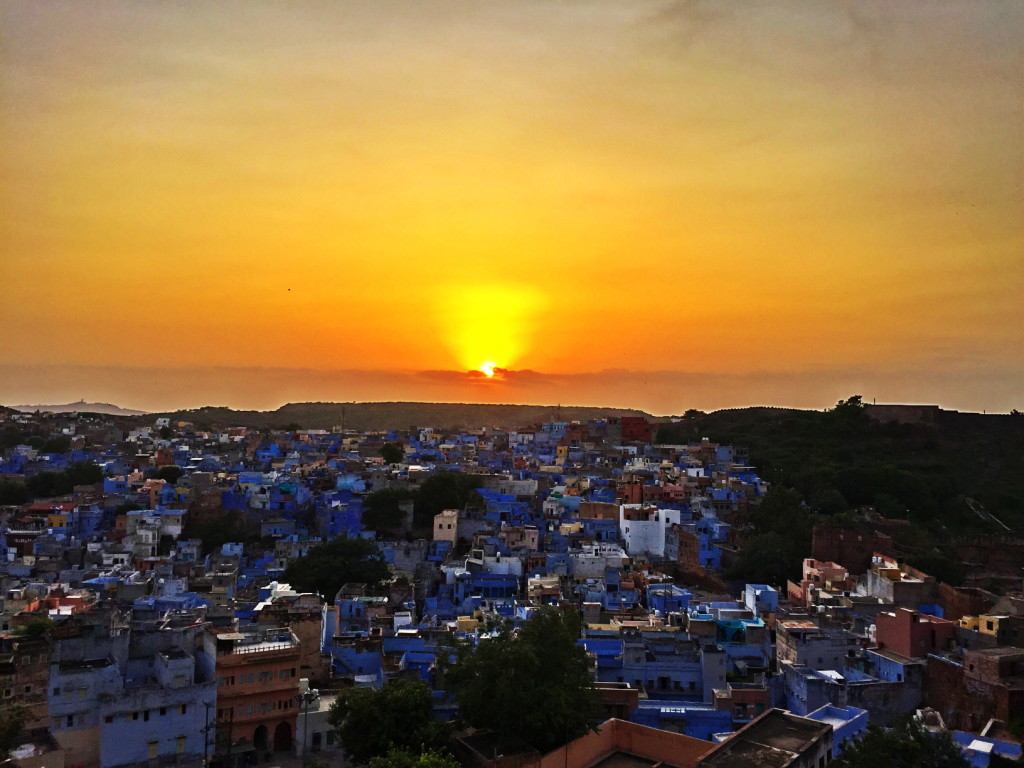
Set in stark contrast against the harsh backdrop of the Thar, the azure-painted houses in Jodhpur have earned it the nickname ‘The Blue City’. There are several stories behind the city’s unique colour. The most convincing one says that, it was the Brahmins who first took to painting their houses blue, as a mark of proclaiming supremacy- a practice that was later followed by everyone else.
The muscular fort, always compelling and distracting had me in her fist even when I decided not to visit it this time. With no itinerary, but just a focus and extreme curiosity to know about life in the blue lanes drew me to the city this time. Real houses, real hopstality and the sweetest chai served by effervescent 10 year olds! Thus, began my vicarious journey.

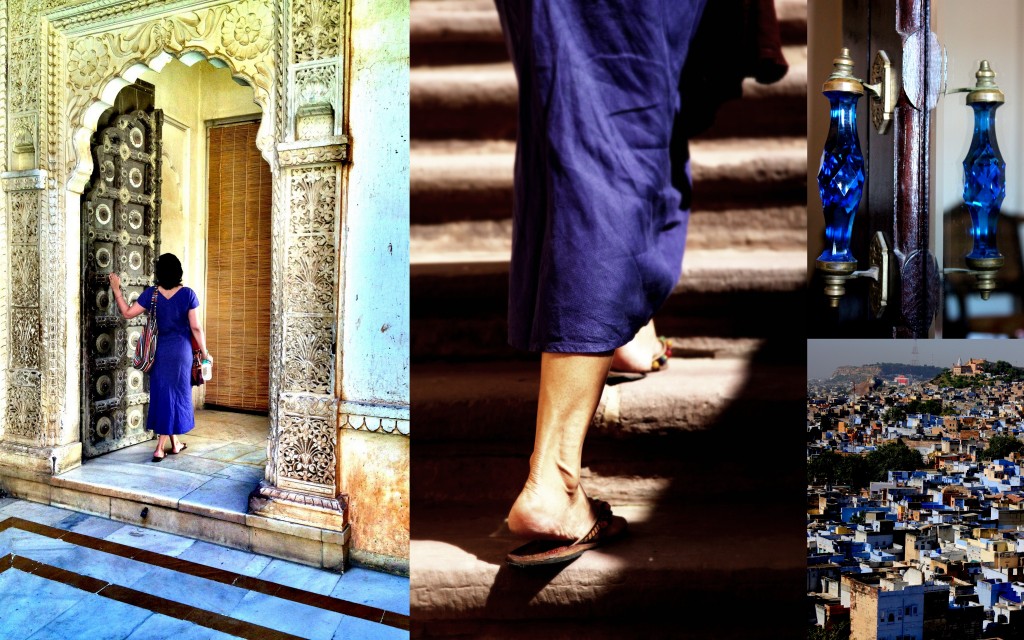
Dreams
It was past 5 pm, when I reached the fort gates. The sun was mellow, and there was a breeze in the air, although a little tepid, would tell anyone that monsoon was around the corner. And, indeed it was. Teej and Rakhsha Bandhan was a week away.
In Rajasthan, Teej is the festival of swings. It marks the advent of the monsoon. An occasion to rejoice in the desert. Late afternoons that promise you rain, early evenings where you can look straight into the eye of the sun, and a twilight of storm clouds that drench your soul as does the promise of a shower in the night hours. Hukum Ram was my host that evening. Serving fine courses of Rajasthani fare in the beautiful Choulakhiya Gardens of the fort as a day job, he stays in the staff-quarters, down the slopes of the ramparts with his family and other colleagues. And, it isn’t everyday that he receives requests from single Indian women travelers to have chai and kachori at his house.
The sun was about to set, and fort gates were closing. As I walked down the path, with the citadel on my left and the rampart wall to my right, I could almost feel goosebumps. The mighty king of forts was in his royal best, as if victorious after a valiant fight. Imposing, terrific and powerful. The Satsuma sun laid its graceful rays on the city below, as if sprinkling on the blue hues ochre marigold shaves, viola petals or carpets of bougainvillea dust! It is not without reason that they say that it isn’t just Rajasthan’s past that shines in a hundred hues. Its present is equally vibrant. As the ladies sat outside their homes in the staff quarters waiting for the menfolk to arrive, the combination of their bright dupattas, the paints on the walls of their houses, fluorescent and shock-colored turbans; the fuchsia, tangerine and crimson sarees; the rust and coffee colour of the soil, all came alive under the umbrella of the twilight hues.. I can’t recollect anything else that can be more eclectic than this.
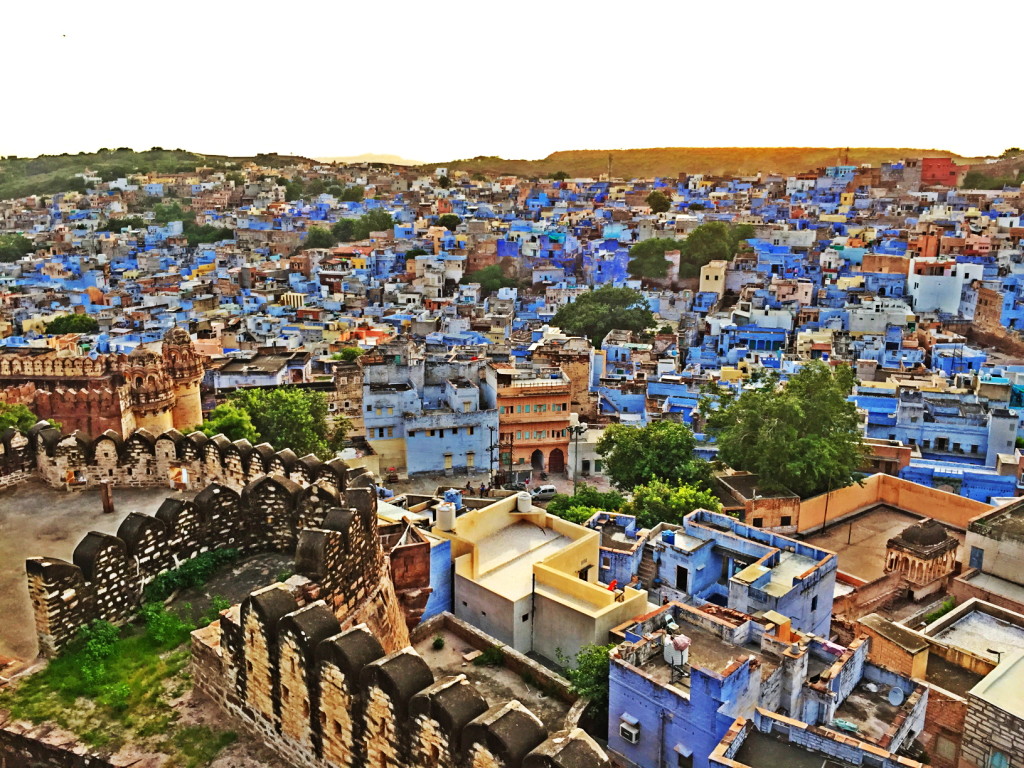


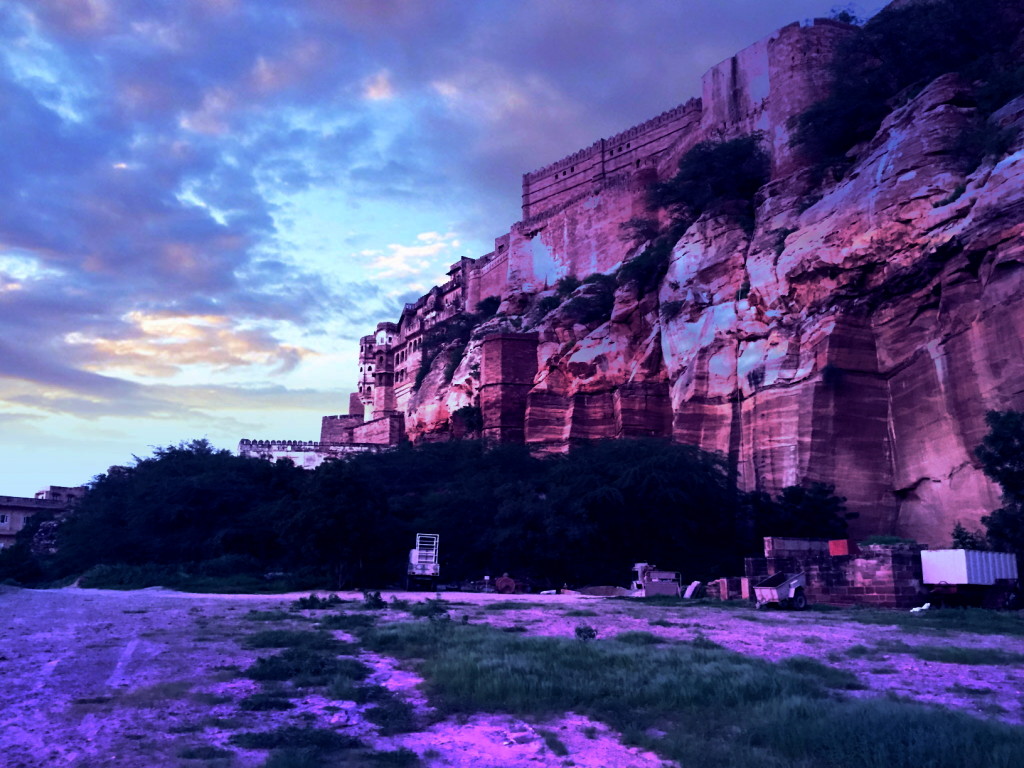
A group of young boys were running around. The youngest ones, exchanging laughter, were focusing on straightening a few kites that they laid out in front of them; some older ones were checking their phones(perhaps taking selfies, if I observed correctly!), and some matured ones, staring into the horizon. Without any hesitation, I joined them.. dangling my legs, staring into the horizon, sharing their space and joy!




I learnt new things that day. For child on that terrace that day, no matter how old or young he is, armed with a simple diamond-shaped kite, a spool of thread and a bit of precious sharp manjha, kite flying is one of the most liberating experiences. As dusk sets in, the sound of “Woh kata!”, (there, the string is cut!) resounds in the sky and the kites take center stage. From simple diamond shaped kites to designer ones, they all try to soar to unimaginable heights. “On a good day”, says one of them, “one of us can even bring in a few free kites after hectic battles in the sky. On a bad day, we have to chase any fallen kite that hasn’t been claimed yet. Either way, the fun never ends!” Daya is Hukum’s son. Along with his little brother Dharmendra and a bunch of other young blokes, they had been sitting on the wall of the fort that faces the setting sun. Undoubtedly they have the best views in the city. A room with a view, like they say. “So, do you study?”, I asked him, sipping my chai, munching my kachori and looking at him stare into the eye of the sun ahead. “Yes! I am in the 1st year of college now”. “What’s your favourite subject”, I ask him. ” Well, I want to be an astronomer, but Baba wants me to study history so that I can secure a job as a professional guide in this fort”.

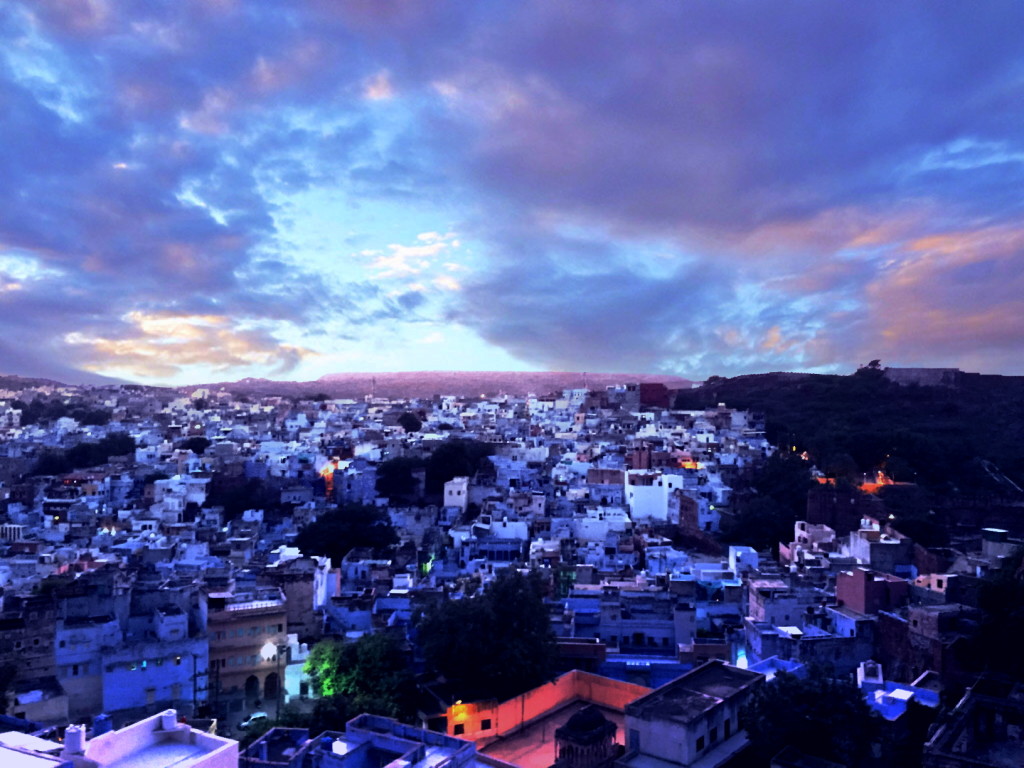
In a place like Jodhpur, hearing a 17 year old Daya talk about his dream of becoming an astronomer suddenly puts you in perspective of a lot of things. Of battles all of us fight; of demons that sometimes don’t allow us to do things we want to do. Maybe Daya will never end up an astronomer. Or perhaps he will discover a new planet in his lifetime. He dreams his dreams.
Of new constellations, complicated telescopes or disappearing galaxies. His Baba, dreams of his. Job security, maintaining his heritage and pride, and of his support in his old age.
But today, if you saw the snippy Daya, you would know that what mattered to him, right now was the company of his friends, his little brother who dotes on him, the monsoon clouds brewing in the sky, the intensity of the sun ahead and the breeze that flirted with his hair and the kites. In life, things happen around us, things happen to us, but the only thing that truly matters is how you choose to react to it and what you make out of it. Life is all about leaning, adopting and converting all the struggles that we experience into something positive. The sun was setting. A large ball, dropping graciously below the horizon. Starting a new say , in some other part of the world. I learnt new things that day. I also learnt how to fly a kite!

“What is the neighbourhood below called, Daya?”, I probed. Beneath me each shade of blue had already started telling me its own story. It gets all the more enchanting when perched atop the fort during sunset, when the setting rays fall upon the electric blue buildings and shades of the setting orange, mixed with blue of rising night, serves you a warm, yet seducing colour palette. The visual contrast, the soothe to the eyes, none stops short at taking your breath away! “Bhrampuri. And behind that, is Chandpole”, he says.






Jodhpur’s oldest residential area, as old as the fort itself is Brahmpuri, the settlement of the Brahmins. Their houses packed together along narrow streets and washed blue with indigo to deflect the summer heat and create shade. Later, others too adopted the blue outer façade giving rising to the synonym ‘blue city’. As we sat dangling our legs and chatting about this and that, temple bells down below started chiming. Beneath me, the blue city was showing me different sights. On my right the town was the densest blue. As your eye moves from right to left, so does the density of the colour. If you glide your eyes with a panoramic view to the far right, there are hardly any blue spots. That’s Sodagaran, home to the Jama Masjid, the largest mosque in the city. And, predictably without any Brahmins houses. Hymns by the red-robe cladded Brahmins below filled the air with spirituality and vibrations I have never felt before. The sound getting denser to my right. I close by eyes, and let the smell of incense mesmerize me. Then the sweetest of interventions happen. From the left, where one sees the Jama Masjid, starts the evening Namaaz. And thus results the beautiful subset of the chants of Krishna interspersed with Allah ho Akbar. Divine experience, yes..but nothing short of a dream!
Blues and Brahmins
It was almost 10am when I reached Bhrampuri the next morning. The word ‘Bhram’ means a maze. It is also a derivation of the word ‘Brahmin’- the highest, most adulated and priestly caste of the Hindu caste system. Local legends claim that the old town of Jodhpur was planned in the form of human body; Mehrangarh Fort, the seat of the King represents the head of the body, the right hand ( neighborhoods of Bhrampuri and Chandpole) represents the Brahmins or the priest community. The left hand (the center part of the city surrounding the fort), was for ministers important feudal lords, landlords and other people who were appointed for the Durbar for the services of the Royal Court. The stomach of the body denotes traders and merchants, engaged in trade and commerce. The legs, or the periphery represent all the manual laborers. Bhrampuri was a sensory delight. Inside is a tangle of winding, glittering, medieval streets, which never seem to lead where you expect them to, scented by incense and ghee, roses and sewers, with priests in red garbs and donkeys paired together to carry their load up and down the steep turquoise alleys.



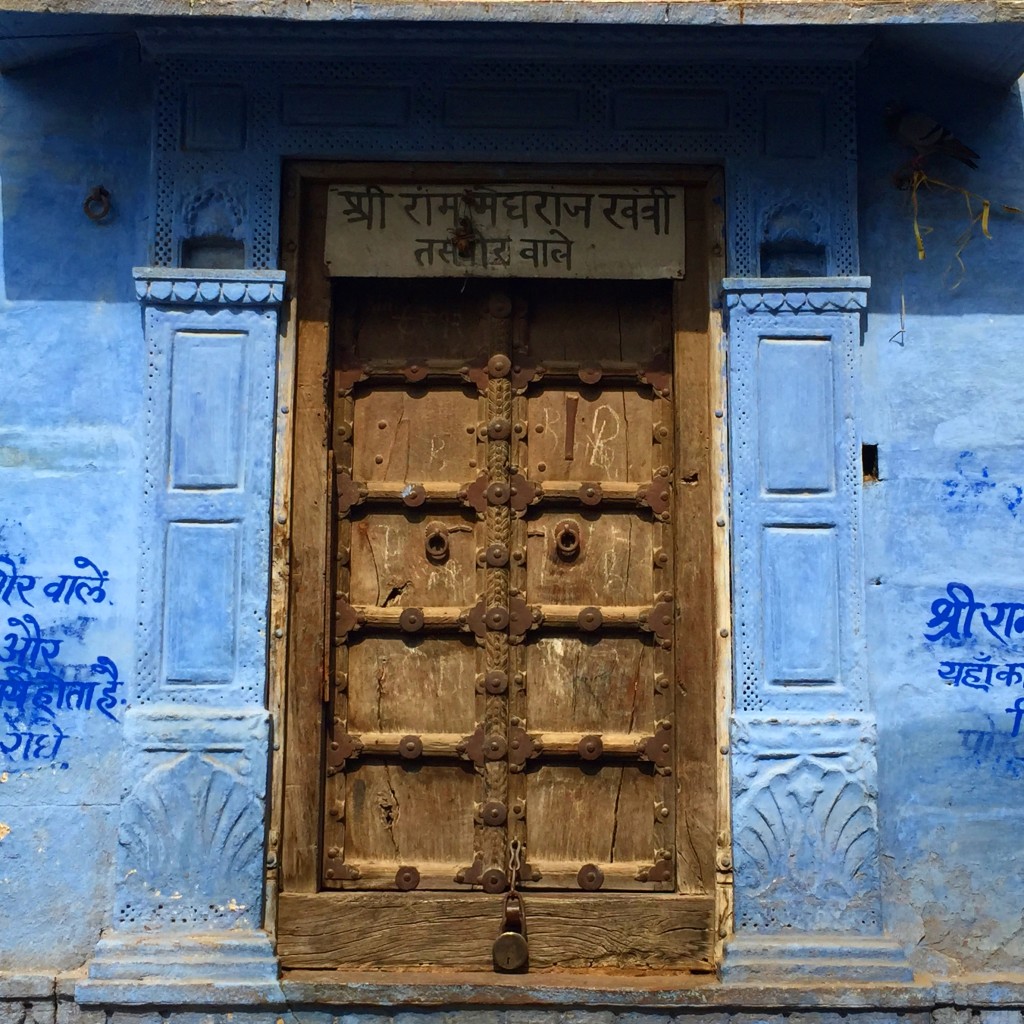
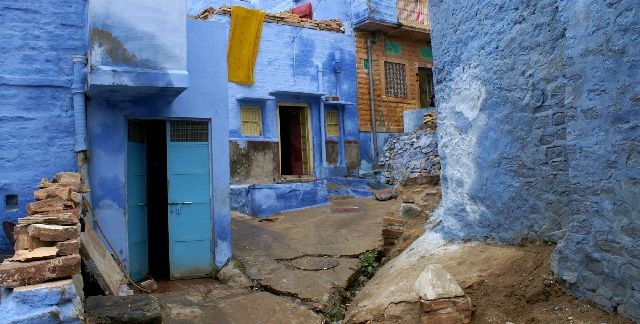

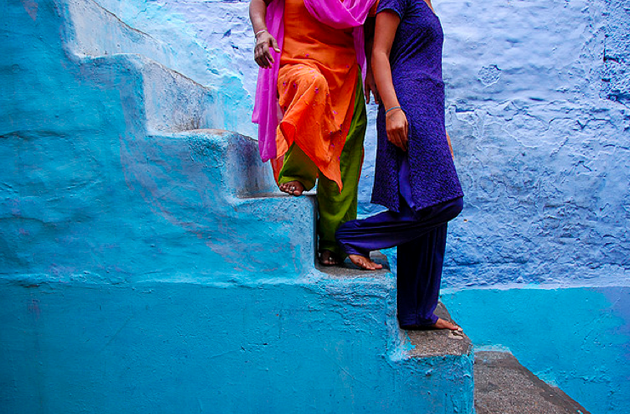
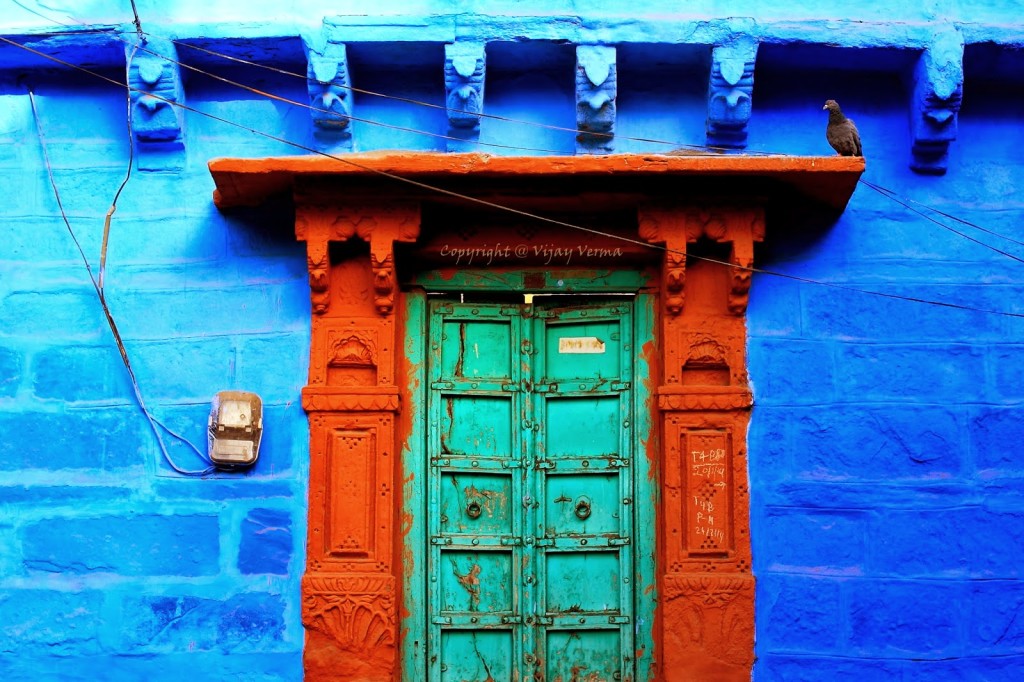

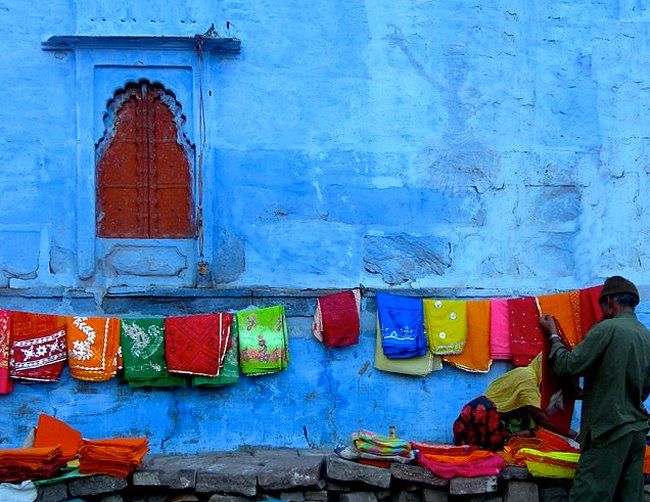


The residents of Jodhpur are extremely proud of the city’s blue color. Pride in the abundance of the higher caste who mark their supremacy, royalty and power. And which is become an acceptable reasoning. Or a more “scientific “reasoning of the colour indigo keeping their houses cooler during the peak summer months of the desert climate. However, the true reason for Jodhpur’s blue color is more practical motivated than artistic reasoning. The dry arid environment of which Jodhpur is located is blighted by termites. The small insects damaged and destroyed the traditional building techniques which involved the exterior being coated in lime wash. It was discovered that the termites were repelled by copper salt compounds and these were added in low concentrations to the lime washes. Copper solutions under certain conditions produce blue compounds and this was true of the materials applied to the exterior of Jodhpur’s houses. The Brahmin class was the only one could afford the copper sulphate lime washes and applied it to their houses which were concentrated in just one area of the city. It is therefore commonly thought that the Brahmins painted their houses the blue color to emphasize their royal connection when in actual fact they were the ones only able to afford the specialist exterior paint.



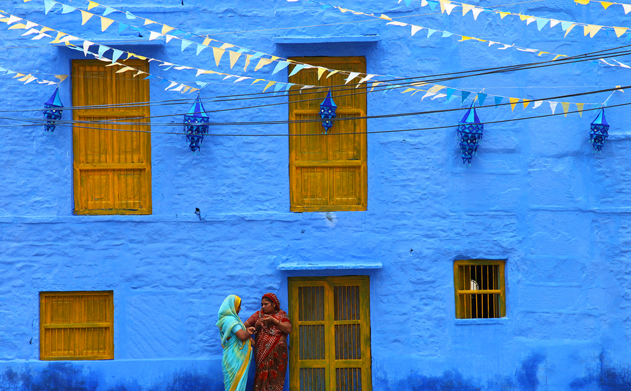
She greeted me with the eyes of an innocent doe. Padmavati. With her distant cousin in Nagpur, as her only connection to the world outside the blue. And out of the blue, seeing me, from a place that she will never travel to, sparkled her eyes. She finished her task of cleaning the front raised porch, so that her husband, a coveted priest in the Krishna temple can sit on when he returns from work. Quick to check the time, so that she isn’t delayed when the husband returns and demands food, she pulls me by my hand and takes me down the alley into a sort of clearing. What followed next was a bit of a shock, really. Accented English, spoken by a half veiled lady inviting me to her shop called ”Morto Bellow”, and enticing me to apply mehendi! Why “Morto Bellow”, I ask her! “Because it is Italian, and will attract tourists!”, came the prompt reply. I led her on for a while, only to suddenly stop and make every effort to reply back to her in Hindi. And so we conversed. She is her English, and me in my Hindi. And just like that, in a jiffy, with her super accented, quarter correct English and my apparent ‘foreign’ look and pure Hindi, we became friends! Nanda. A rebel in her society of women. Runs a tiny handicraft store that secretly employs young brides, usually married to sexagenarians of this upper caste, who don’t believe in birth control. Married to a Brahmin who works in a government emporium up in the street bazars, Nanda christened herself to ‘Bobby’, and runs a establishment called ” Bobby Heena”, deciding to have a business of her own. That’s a name, she recons that is easy on the foreign tourists, as most definitely a store called ‘Morto Bellow’, would be! She wants her 10-year old son to be an engineer and marry out of caste. She wants to visit Rome. She wants to learn how to ride a bike. And she said to me, that she wants to live my life.

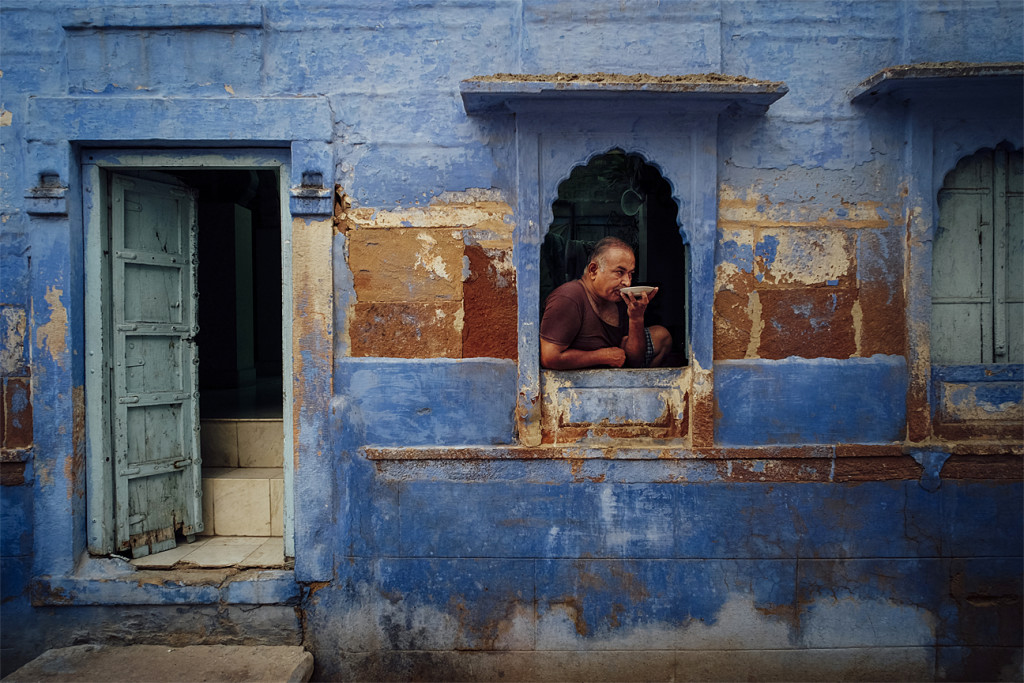



She listens to me bewildered, excited, jealous and in admiration, as I tell her that I am here alone, and all by my own to discover the labyrinth of this neighborhood. ” You not scared?” “Scared of what?”, I ask her, thinking she might have concerns on my safety and security as a solo traveler. “Of your husband and your family”, she answers. Pause, a bit, I tell myself. Pause a bit. In a society where women today do the unthinkable independently, I have with me Nanda who can’t get beyond her fear of the husband. She is so mesmerized with me that she wants to do heena. We settle on my ankle and she says ” I like you. So no money from you”. While I kept insisting on the amount, I had a clever idea. A group of French tourists had stopped by. “Go call them,Nanda… my ankle will model for your business!”. I stick out my freshly tattooed ankle, while an excited Nanda explained that the design was traditional and denoted love, luck and freedom. #instasuccess, as an Instagrammer would say!!
I left the gushing Nanda to her bliss of business, and headed towards the Navchokhiya road, the main arterial road connecting Bhrampuri to the old streets of the city.


At night, back in my little room in The Blue House, when there is nothing but stillness, I opened the tiny window that showed me the fort ahead. It was raining, and the thunder roared somewhere in the distance. A spark zig-zagged atop the fort, and flashed. A few drops of rain fell on my face. And I heard music, of a different kind. I heard in my head the chattering sounds of the kids flying their kites, the chants and the namaaz, the sound of trinkets on Padmavati’s ankle, and the sound of love, luck and freedom.

Sambrita Basu is a food-fascinated travel writer and photographer based out of Bangalore India. A background and a degree in hospitality and restaurant management paved her interest in food. As the secretary of the institution’s editorial club, she contributed regularly and wrote about food in their annual magazine, A la Carte.
Sambrita has published interviews of celebrity authors and business veterans in international publications like Infineon. Her contributions also include photographs on foods and restaurants of Bangalore for DNA—a leading newspaper publication in Bangalore. Sambrita’s creative expressions transport readers to alleys, hotels, hide-outs, restaurants, attics, and spice markets in several cities across the world.
Sam (as she is popularly known by her friends and family) doesn’t write for a living, but she lives to write.








